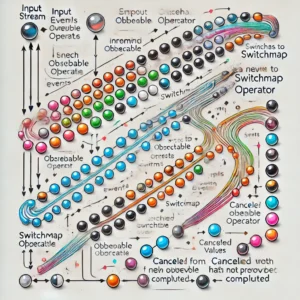Continuous Integration and Deployment (CI/CD) is a set of practices that have revolutionized software development, making it faster, more reliable, and more efficient. CI/CD is a combination of two related practices: Continuous Integration (CI) and Continuous Deployment (CD). CI is the practice of continuously integrating code changes into a shared repository, while CD is the practice of automatically deploying code changes to production.
CI/CD has become an essential part of modern software development because it helps teams deliver code changes more frequently and reliably. By continuously integrating code changes into a shared repository, teams can catch and fix errors early in the development process, reducing the risk of bugs and other issues. By automatically deploying code changes to production, teams can reduce the time and effort required to release new features and updates, allowing them to deliver value to customers more quickly.
Overall, CI/CD is a powerful set of practices that can help software development teams work more efficiently and effectively. By adopting CI/CD, teams can improve the quality of their code, reduce the risk of errors and bugs, and deliver value to customers more quickly.
Understanding Continuous Integration
As software development has become more complex and fast-paced, Continuous Integration (CI) and Continuous Deployment (CD) have become increasingly important. CI/CD is a software development approach that aims to improve the speed, efficiency, and reliability of software delivery. In this section, I will provide an overview of CI/CD, its importance in modern software development, and a brief overview of the topics that will be covered.
Definition of Continuous Integration (CI) and Continuous Deployment (CD)
CI is a process where developers frequently merge code changes into a central repository where automated builds and tests run. The goal is to ensure that any code changes made by developers are integrated into the main codebase as quickly as possible. This helps to identify and fix issues early in the development process, reducing the risk of bugs and conflicts down the line.
CD, on the other hand, is the process of automatically deploying code changes to production. Once code changes have been integrated and tested through the CI process, CD ensures that those changes are automatically deployed to production environments. This helps to ensure that software is delivered to customers quickly and reliably.
Importance of CI/CD in modern software development
CI/CD is an essential part of modern software development. It allows developers to work on code changes in smaller, more manageable chunks, reducing the risk of introducing bugs or conflicts. By integrating and testing code changes frequently, developers can identify and fix issues early in the development process, reducing the time and effort required to fix them later.
CD also helps to ensure that software is delivered to customers quickly and reliably. By automating the deployment process, CD reduces the risk of human error and ensures that software is deployed consistently across different environments.
Brief overview of the topics to be covered
In the following sections, I will dive deeper into the different aspects of CI/CD. I will discuss the benefits of CI/CD, the different tools and technologies that are used in the process, and the different stages of the CI/CD pipeline. I will also provide some best practices for implementing CI/CD in your software development process.
Understanding Continuous Integration (CI)
Continuous Integration (CI) is a software development practice that involves frequently integrating code changes into a shared repository. The goal of CI is to catch and fix issues early in the development cycle, making it easier to maintain and update the codebase over time.
Definition and Purpose of CI
CI is a process that involves automatically building and testing code changes as they are committed to a shared repository. It is designed to help developers catch issues early in the development cycle, before they become bigger problems that are more difficult and time-consuming to fix.
The purpose of CI is to provide a way for developers to work collaboratively on a codebase without introducing errors or conflicts. By integrating code changes frequently, developers can ensure that everyone is working from the same codebase and that any issues are caught and resolved quickly.
Benefits of CI in software development
CI has several benefits in software development, including:
- Reduced risk of errors: By catching issues early in the development cycle, CI helps reduce the risk of introducing errors or conflicts into the codebase.
- Faster feedback loops: CI provides developers with faster feedback loops, allowing them to catch and fix issues more quickly.
- Improved collaboration: CI encourages collaboration by providing a way for developers to work together on a shared codebase.
- Increased efficiency: By automating the process of building and testing code changes, CI helps developers work more efficiently and reduces the time required to bring new features to market.
How CI works: Automating code integration and testing
CI works by automating the process of integrating code changes and testing them for errors or conflicts. When a developer makes a change to the codebase, the CI system automatically builds the code and runs a series of tests to ensure that everything is working as expected.
If any issues are found, the CI system alerts the developer so that they can fix the issue before it becomes a bigger problem. Once the issue is resolved, the developer can commit the changes to the shared codebase, and the CI system will automatically rebuild and test the code to ensure that everything is working as expected.
Common CI tools
There are several common CI tools that developers can use to implement CI in their software development process, including:
- Jenkins: Jenkins is an open-source automation server that is widely used for CI. It provides a way for developers to automate the process of building, testing, and deploying code changes.
- Travis CI: Travis CI is a cloud-based CI service that provides automated testing and deployment for GitHub projects. It is designed to be easy to use and integrates well with other development tools.
- CircleCI: CircleCI is a CI/CD platform that provides automated testing and deployment for web and mobile applications. It is designed to be easy to use and provides a wide range of integrations with other development tools.
Overall, CI is an important practice in software development that can help reduce the risk of errors, improve collaboration, and increase efficiency. By automating the process of integrating code changes and testing them for errors or conflicts, developers can work more efficiently and bring new features to market more quickly.
Implementing Continuous Integration
As a software developer, implementing continuous integration (CI) is an essential step in improving the quality and speed of software development. CI is a DevOps practice that involves continuously integrating code changes into a shared repository and running automated tests to ensure that the code is functioning correctly. In this section, I will discuss some key aspects of implementing CI in software development.
Setting up a CI pipeline
Setting up a CI pipeline involves creating a series of automated steps to build, test, and deploy code changes. A CI pipeline typically includes the following stages:
- Build stage: This stage involves compiling the code and creating a deployable artifact, such as a JAR file or Docker container.
- Test stage: This stage involves running automated tests to ensure that the code changes are functioning correctly.
- Deploy stage: This stage involves deploying the code changes to a staging environment for further testing.
To set up a CI pipeline, you need to choose a CI tool that can automate these stages. Popular CI tools include Jenkins, GitLab CI/CD, and CircleCI.
Version control and branching strategies
Version control is an essential aspect of implementing CI. Version control systems, such as Git, allow developers to track changes to code and collaborate effectively. To implement CI, it is essential to follow a branching strategy that enables developers to work on code changes in isolation without affecting the main codebase.
One popular branching strategy is GitFlow, which involves creating two long-lived branches: master and develop. Developers work on feature branches that are created from develop and merged back into develop via pull requests. Once the changes are tested and approved, they are merged into master and released to production.
Writing automated tests for CI
Automated testing is a crucial aspect of CI. Automated tests ensure that code changes are functioning correctly and do not introduce regressions. To implement CI, it is essential to write automated tests that cover all critical functionality of the application.
There are several types of automated tests, including unit tests, integration tests, and end-to-end tests. Unit tests are the foundation of automated testing and test individual units of code in isolation. Integration tests test the interaction between different units of code, and end-to-end tests test the entire application from the user’s perspective.
Integrating code reviews and automated checks
Integrating code reviews and automated checks is another essential aspect of implementing CI. Code reviews help ensure that code changes are of high quality and meet the team’s standards. Automated checks, such as linting and static code analysis, help catch common coding errors and ensure that code changes adhere to best practices.
To integrate code reviews and automated checks, you can use tools such as GitHub or GitLab. These tools allow developers to create pull requests that trigger automated checks and require code reviews before merging changes into the main codebase.
In conclusion, implementing continuous integration is essential for software development teams that want to improve the quality and speed of their development process. By setting up a CI pipeline, following a version control and branching strategy, writing automated tests, and integrating code reviews and automated checks, teams can ensure that code changes are of high quality and functioning correctly.
Introduction to Continuous Deployment (CD)
As a software development practice, Continuous Deployment (CD) is an automated software release process where code changes are deployed to different stages as they pass predefined tests. CD is an extension of Continuous Integration (CI) and Continuous Delivery (CD), and it is a key component of the DevOps methodology.
Definition and Purpose of CD
CD is a software development practice that emphasizes the automation of the software release process. The purpose of CD is to facilitate faster releases by using automation to help remove the need for human intervention as much as possible during the deployment process. CD enables developers to deploy code changes to production in real-time with minimal downtime.
Benefits of Continuous Deployment
CD has several benefits, including:
- Faster time-to-market: CD enables developers to deliver code changes to production faster, which helps businesses to stay competitive in the market.
- Improved software quality: CD helps to detect and fix issues early in the development process, which leads to higher software quality.
- Increased developer productivity: CD automates the deployment process, which frees up developers to focus on writing code and developing new features.
- Reduced risk: CD enables developers to deploy code changes to production in small increments, which reduces the risk of introducing bugs or other issues.
How CD works: Automating deployment and release processes
CD works by automating the deployment and release processes. CD tools automate the entire process of building, testing, and deploying code changes to production. CD tools enable developers to automate the entire software development lifecycle, from code commit to production deployment.
CD tools use a variety of techniques to automate the deployment process, including:
- Blue-green deployments: This technique involves deploying a new version of the application alongside the old version, and then directing traffic to the new version once it has been tested and verified.
- Canary deployments: This technique involves deploying a new version of the application to a small subset of users, and then gradually rolling it out to the rest of the users once it has been tested and verified.
- Feature toggles: This technique involves using a configuration file to turn features on and off, which enables developers to deploy code changes to production without affecting end-users.
Comparison with Continuous Delivery
CD is often confused with Continuous Delivery (CD), but there is a difference between the two. CD is an extension of CD, and it goes a step further by automating the deployment process. CD enables developers to deploy code changes to production in real-time with minimal downtime, while CD focuses on automating the entire software development lifecycle, from code commit to production deployment.
Overall, CD is a powerful software development practice that enables developers to deliver code changes to production faster, with higher quality, and with reduced risk. By automating the deployment process, CD tools enable developers to focus on writing code and developing new features, while the tools take care of the deployment and release process.
Implementing Continuous Deployment (CD)
As a software developer, implementing Continuous Deployment (CD) is an essential step in achieving fast and reliable software delivery. CD ensures that changes to the codebase are automatically deployed to production, without any manual intervention. In this section, I will discuss the key components of implementing a CD pipeline.
Setting up a CD pipeline
The first step in implementing CD is to set up a CD pipeline. This involves creating a series of automated steps that will build, test, and deploy the code changes to production. A CD pipeline typically consists of the following stages:
- Build: This stage involves compiling the code and creating a deployable artifact.
- Test: This stage involves running automated tests to ensure that the code changes do not introduce any new bugs.
- Deploy: This stage involves deploying the changes to a production environment.
Deployment strategies (e.g., Blue-Green, Canary)
There are several deployment strategies that can be used in a CD pipeline. Two popular strategies are Blue-Green and Canary deployments.
- Blue-Green Deployment: In this strategy, two identical production environments are set up, one “blue” and one “green.” The current production environment is “blue,” and the new changes are deployed to the “green” environment. Once the changes have been tested and verified, traffic is switched from the “blue” environment to the “green” environment.
- Canary Deployment: In this strategy, a small percentage of production traffic is diverted to the new changes. This allows for testing and verification of the changes before they are rolled out to the entire production environment.
Automated release and rollback processes
Automated release and rollback processes are critical components of a CD pipeline. Automated release processes ensure that code changes are deployed to production quickly and efficiently. Automated rollback processes allow for the quick reversal of changes if any issues arise.
Monitoring and alerting in CD pipelines
Monitoring and alerting are essential components of CD pipelines. Monitoring should be set up to track the performance of the application and detect any issues that may arise. Alerting should be set up to notify the development team of any issues that require attention.
In conclusion, implementing Continuous Deployment (CD) is an essential step in achieving fast and reliable software delivery. A CD pipeline should be set up with automated release and rollback processes, and monitoring and alerting should be implemented to ensure that any issues are detected and addressed quickly.
Best Practices for CI/CD
As a software developer, I have learned that there are several best practices that can help ensure the success of Continuous Integration and Deployment (CI/CD) pipelines. In this section, I will discuss some of the most important practices that I have found to be effective.
Code quality and linting
Maintaining code quality is crucial in a CI/CD pipeline. It ensures that the code is maintainable, scalable, and performs optimally. Code quality can be maintained by using static code analysis tools, which can detect potential issues before they become problems. Linting tools can be used to enforce coding standards and conventions, leading to consistent and readable code. Using these tools can help reduce the number of bugs and improve overall code quality.
Environment isolation and reproducibility
It is important to ensure that the CI/CD pipeline is isolated from other environments to prevent conflicts and ensure reproducibility. This can be achieved by using containerization tools like Docker, which provides a consistent and isolated environment for the pipeline. Additionally, using Infrastructure as Code (IaC) tools like Terraform can help ensure that the infrastructure is reproducible and consistent across environments.
Continuous Monitoring and Feedback loops
Continuous monitoring and feedback loops are essential in a CI/CD pipeline. Monitoring tools like Prometheus and Grafana can be used to monitor metrics like build times, error rates, and resource utilization. Feedback loops can be implemented by using tools like Slack or email notifications to alert developers of issues or failures in the pipeline. These feedback loops can help identify issues early and prevent them from becoming bigger problems.
Security considerations in CI/CD pipelines
Security is a critical consideration in a CI/CD pipeline. It is important to ensure that the pipeline is secure and that sensitive data is protected. This can be achieved by using secure coding practices, implementing access controls, and using encryption and authentication tools. Additionally, using tools like SonarQube or Snyk can help identify potential security vulnerabilities in the code.
By following these best practices, I have found that CI/CD pipelines can be more effective and efficient, leading to faster and more reliable software delivery.
CI/CD in Software Development
As a software developer, I have come across the term CI/CD many times while working on various projects. CI/CD stands for Continuous Integration and Deployment, which is a set of practices that help developers to deliver code changes quickly and reliably. In this section, I will discuss the role of CI/CD in software development and the CI/CD pipeline.
Role in Agile Development
CI/CD plays a crucial role in Agile development. Agile development is a methodology that emphasizes collaboration, flexibility, and rapid iteration. In Agile development, developers work in small teams, and they need to deliver code changes frequently. CI/CD helps developers to achieve this by automating the process of building, testing, and deploying code changes.
By using CI/CD, developers can catch errors early in the development process, which saves time and money. It also helps to reduce the risk of introducing bugs into the production environment. CI/CD ensures that the code is always in a deployable state, which means that developers can release new features quickly and reliably.
CI/CD Pipeline
The CI/CD pipeline is a set of processes that automate the building, testing, and deployment of code changes. The pipeline consists of several stages, and each stage performs a specific task.
The first stage of the pipeline is Continuous Integration, which involves merging code changes into a shared repository. The code changes are then built and tested automatically. If the tests pass, the code changes are merged into the main branch.
The second stage of the pipeline is Continuous Deployment, which involves deploying the code changes to a production environment. This stage is optional, and some organizations choose to deploy code changes manually.
The CI/CD pipeline can be customized to meet the specific needs of an organization. For example, some organizations may include additional stages in the pipeline, such as code analysis or security testing.
In conclusion, CI/CD is an essential practice in software development. It helps developers to deliver code changes quickly and reliably, which is crucial in Agile development. The CI/CD pipeline automates the process of building, testing, and deploying code changes, which saves time and reduces the risk of introducing bugs into the production environment.
Challenges and Solutions in CI/CD Implementation
As with any technology implementation, CI/CD can come with its own set of challenges. Here are some of the common challenges that teams may face when adopting a CI/CD approach and strategies for overcoming them.
Common Challenges
- Lack of automation expertise: CI/CD requires a significant amount of automation, which can be challenging for teams that lack expertise in this area. Lack of automation expertise can result in poorly designed pipelines, which can lead to longer deployment times and increased risk of errors.
- Difficulty testing in complex environments: Testing can be challenging in complex environments, such as those involving multiple platforms or legacy systems. This can result in delays in the testing process and increased risk of errors.
- Integration with legacy systems: Many organizations have legacy systems that are not compatible with modern CI/CD tools. This can make it difficult to implement CI/CD in these environments.
- Security and compliance concerns: CI/CD can introduce new security and compliance concerns, particularly in regulated industries. Teams must ensure that their pipelines comply with relevant regulations and that security is integrated throughout the entire development process.
Strategies for Overcoming CI/CD Roadblocks
- Invest in automation expertise: Teams can overcome the lack of automation expertise by investing in training or hiring experts in this area. This can help ensure that pipelines are well-designed and that automation is integrated throughout the development process.
- Simplify testing in complex environments: Teams can simplify testing in complex environments by using tools that allow for automated testing across multiple platforms. This can help reduce delays in the testing process and increase the accuracy of test results.
- Modernize legacy systems: To overcome challenges with legacy systems, teams can consider modernizing these systems or using tools that allow for integration with legacy systems. This can help ensure that CI/CD can be implemented in these environments.
- Integrate security and compliance throughout the development process: Teams can overcome security and compliance concerns by integrating these considerations throughout the entire development process. This can include using tools that allow for automated security testing and ensuring that pipelines comply with relevant regulations.
Scaling CI/CD for Larger Projects and Teams
As projects and teams grow, scaling CI/CD can become a challenge. Here are some strategies for scaling CI/CD for larger projects and teams:
- Invest in infrastructure: Teams can scale CI/CD by investing in infrastructure that can support larger projects and teams. This can include using cloud-based infrastructure or dedicated hardware.
- Use parallelization: Parallelization can help teams scale CI/CD by allowing for multiple tasks to be completed simultaneously. This can help reduce deployment times and increase efficiency.
- Standardize processes: Standardizing processes can help teams scale CI/CD by reducing the amount of time and effort required to implement pipelines. This can include using templates or standardizing testing and deployment processes.
In conclusion, while CI/CD can come with its own set of challenges, there are strategies that teams can use to overcome these roadblocks and scale CI/CD for larger projects and teams. By investing in automation expertise, simplifying testing in complex environments, modernizing legacy systems, integrating security and compliance throughout the development process, investing in infrastructure, using parallelization, and standardizing processes, teams can successfully implement CI/CD and reap the benefits of faster, more efficient software development.
Case Studies of Successful CI/CD Implementation
Real-world examples of companies benefiting from CI/CD
In recent years, many companies have adopted CI/CD practices to improve their software development process. Here are a few examples of companies that have successfully implemented CI/CD:
- Amazon: Amazon is one of the pioneers of CI/CD. The company has been using CI/CD practices for over a decade now. Amazon’s CI/CD pipeline includes automated testing, code reviews, and continuous deployment. By using CI/CD, Amazon has been able to reduce the time it takes to deploy new features and updates to its customers.
- Netflix: Netflix is another company that has successfully implemented CI/CD. Netflix’s CI/CD pipeline includes automated testing, continuous integration, and continuous deployment. By using CI/CD, Netflix has been able to reduce the time it takes to release new features and updates to its customers. In addition, Netflix has been able to improve the quality of its software by catching bugs and errors early in the development process.
- Etsy: Etsy is an online marketplace that has also adopted CI/CD practices. Etsy’s CI/CD pipeline includes automated testing, continuous integration, and continuous deployment. By using CI/CD, Etsy has been able to reduce the time it takes to deploy new features and updates to its customers. In addition, Etsy has been able to improve the quality of its software by catching bugs and errors early in the development process.
Lessons learned from successful CI/CD implementations
Here are a few lessons that can be learned from successful CI/CD implementations:
- Automation is key: One of the key factors in successful CI/CD implementations is automation. By automating testing, integration, and deployment processes, companies can reduce the risk of human error and speed up the development process.
- Collaboration is crucial: Another important factor in successful CI/CD implementations is collaboration. By fostering collaboration between developers, testers, and other stakeholders, companies can ensure that everyone is on the same page and working towards the same goals.
- Continuous improvement is necessary: Finally, successful CI/CD implementations require continuous improvement. By constantly reviewing and refining the CI/CD pipeline, companies can identify areas for improvement and make changes to improve the process over time.
In conclusion, CI/CD is a powerful tool for improving the software development process. By adopting CI/CD practices, companies can reduce the time it takes to deploy new features and updates, improve the quality of their software, and ultimately deliver a better product to their customers.
Future Trends in CI/CD
As software development continues to evolve, so does the role of CI/CD in the development process. In this section, I will discuss some emerging trends in CI/CD and how they are shaping the future of software development.
Emerging technologies and practices in CI/CD
One of the most significant trends in CI/CD is the increasing use of containerization and microservices. Containerization allows developers to package their applications and dependencies into a single, portable unit, which can be easily deployed across different environments. Microservices, on the other hand, involve breaking down applications into smaller, more manageable components, which can be developed and deployed independently.
Another emerging trend is the use of artificial intelligence and machine learning in CI/CD. These technologies can help automate testing and deployment processes, identify potential issues before they occur, and optimize the development workflow.
Finally, there is a growing interest in the use of serverless architectures in CI/CD. Serverless computing allows developers to focus on writing code, rather than worrying about infrastructure management. This can help reduce development time and improve scalability.
The role of CI/CD in DevOps and Agile methodologies
As DevOps and Agile methodologies continue to gain popularity, the role of CI/CD in the development process becomes increasingly important. Continuous integration and deployment are essential components of both DevOps and Agile, as they allow for faster, more frequent releases and improve collaboration between development and operations teams.
In particular, CI/CD helps facilitate the continuous feedback loop that is at the heart of Agile development. By automating testing and deployment processes, developers can quickly receive feedback on their code changes, allowing them to iterate and improve more rapidly.
Furthermore, CI/CD can help reduce the risk of errors and downtime in production environments, which is essential for DevOps teams that are responsible for maintaining and updating live applications.
In conclusion, the future of CI/CD is closely tied to the ongoing evolution of software development practices and technologies. By embracing emerging trends and technologies, developers can continue to improve the speed, efficiency, and quality of their development workflows.
Conclusion
Recap of the importance of CI/CD in modern software development
In today’s fast-paced software development world, Continuous Integration and Deployment (CI/CD) has become an essential practice for teams to deliver high-quality software quickly and efficiently. CI/CD helps to automate the software delivery process, reduce manual errors, and minimize the time between code changes and deployment. It also enables developers to catch and fix issues early on in the development process, reducing the risk of bugs and security vulnerabilities in production.
CI/CD practices are particularly important in Agile and DevOps environments, where teams need to develop, test, and deploy software quickly and efficiently. By automating the build, testing, and deployment process, teams can focus on writing code and delivering value to customers, rather than spending time on manual tasks.
Encouragement for readers to explore and implement CI/CD in their projects
If you’re not already using CI/CD in your software development projects, now is the time to start exploring it. There are many tools and platforms available to help you implement CI/CD, including Jenkins, Travis CI, CircleCI, and AWS CodePipeline.
Implementing CI/CD can be a challenging task, but it’s worth the effort. It will help you to deliver high-quality software more quickly and efficiently, and reduce the risk of bugs and security vulnerabilities in production. By automating the build, testing, and deployment process, you can focus on what really matters – writing code and delivering value to your customers.
In conclusion, CI/CD is an essential practice for modern software development teams. It helps to automate the software delivery process, reduce manual errors, and minimize the time between code changes and deployment. If you’re not already using CI/CD, now is the time to start exploring it and implementing it in your projects.






